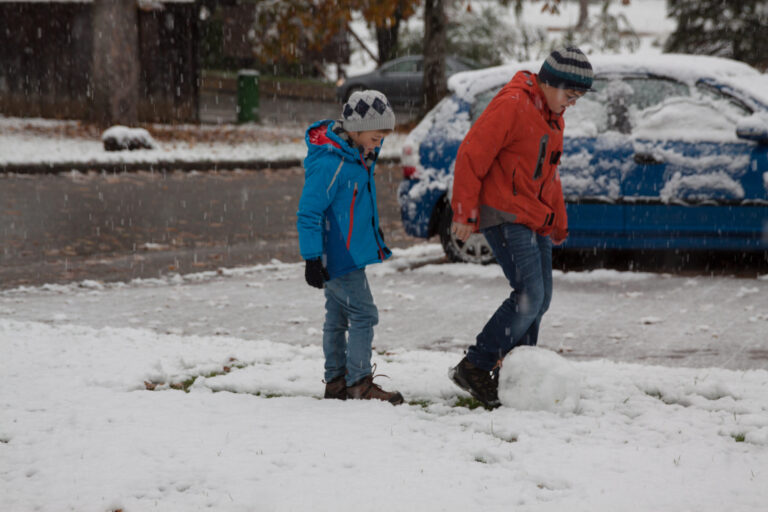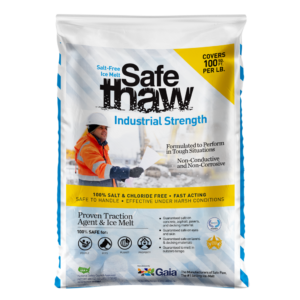Preventing Falls On Slippery Sidewalks And Roads

You must be knowing the dangers of walking on ice and the unfortunate slips and fall accidents due to the slick icy layer. Sometimes these accidents can cause severe injuries and even lead to hospitalization. Therefore, take all the precautions while going out of the house after a snowfall. In this article, we will discuss some tips for walking on ice that you can immediately out to use.
What Do You Put While Walking On Icy Sidewalks?
Treating icy sidewalks is crucial to ensure safety for pedestrians. Several options are available on how to walk on icy sidewalks,:
- Salt: Rock salt is commonly used to melt ice on slippery sidewalks. However, it can be harmful to pets, plants, and concrete surfaces.
- Sand: Sand doesn’t melt ice but provides traction, reducing the risk of slipping.
- Walk On Ice: Walk On Ice is a non-toxic, non-corrosive traction agent designed to create grip on icy sidewalks without harming the environment or surfaces. It’s an innovative solution that’s 100% pet-safe and easy to apply.
How to Treat Icy Sidewalks?
What to use on icy sidewalks? Treating icy sidewalks effectively involves the following steps:
- Clear Snow: Begin by removing any snow accumulation on the sidewalk. Use a snow shovel or snow blower.
- Apply Traction Agent: If you’re looking for a safe and eco-friendly solution, consider using Walk On Ice. It can be evenly spread on the icy surface to create traction without harming the environment.
- Avoid Excessive Salt: If you choose to use salt, apply it sparingly. Excessive salt can damage concrete and harm plants and animals.
Winter Hacks To Prevent You From Slipping
Kitty Litter
Some people use kitty litter as a traction agent but let me tell you that it is not very effective and provides minimum traction. Moreover, kitty litter consists of clay that absorbs water to form a lumpy sticky solution on the ground. It also creates a mess that to be cleaned afterward.
If not cleaned properly it tends to flow with the melted water and clog your sewers and drains.
Walk On Ice
Walk on Ice is 100% natural and is safe for people, pets, and the environment. You can even allow the product to get swept into the garden without any fear of damage.
Walk on Ice gives you instant traction and allows you to prevent the dangers of walking on ice. It gives you a safe, non-slippery surface due to the presence of two different types of granules.
- Absorbers: Absorbers immediately absorb the excess water layer on the surface of the ice. These loose water layers are the main reason behind the slipperiness of the ice.
- Grippers: Grippers have a spiky structure that firmly grips the ice. It increases the traction for walking on the ice surface.
Rock Salt
Rock salt is cheaper and is commonly used as an ice melt to remove the slick ice layer from the driveways and sidewalks.
But rock salt is a chloride-based salt and is very harmful to your concrete and pets. Sodium chloride in rock salt can corrode the concrete and weaken your rooftops. It can also cause harm to kids, pets, and vegetation.
Moreover, rock salt doesn’t work instantly, and it takes long hours to melt the ice.
Get ready for winter with Walk On Ice instant traction on snow and ice
Spikes For Shoes To Walk On Ice
Shoe spikes are like add-ons that go on top of your shoes and give you a grip when walking on ice.
Shoe spikes work well and provide traction while walking on soft snow and ice. But, the downside is that they are tedious to put on, and metallic spikes are slippery on hard surfaces like tiles and flooring.
Conclusion
Winters are there to enjoy if you have made your preparation to face the extreme outside weather. You also have a responsibility to give your family and visitors a safe passage to your house. By using instant traction agents like Walk on Ice, you can prevent these unfortunate accidents from happening. Use these tips for walking on ice and you can be more confident while walking in the snow.
FAQs
Other Ice Melt Products
Safe Paw
The Original and #1 Selling Pet and Child Safe Ice Melt for over 20 years. Guaranteed environmentally safe – will not harm waterways and sensitive wetlands. All products are made in the USA.

Safe Thaw
Imagine an ice melt you can put down and never worry about. It won’t harm pets, kids, and your property. That’s Safe Thaw. Unlike anything else on the market, Safe Thaw can change how winter affects our planet.



